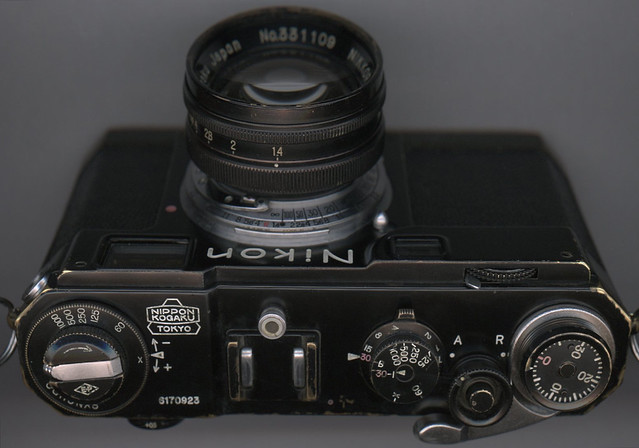Perhaps you need to clarify your chronology. The 5cm f1.4 came out in the fall of 1950. The change from a marking of NK Tokyo to NK Japan on the beauty ring was not clear-cut but certainly well before 1953. All these Nikkors, even the black-finished, have quite a bit of brass in their mountings, although the later ones have less—and weigh noticeably less. The only "All black" 5cm Nikkors were ones made for Black-finished Nikons, and the later re-designed 50s that came out in the 1960s. All-black 50mm Nikkors are rare. They were not part of the regular series. NK transitioned to the Black-mounted 5cm Nikkor before the Black-dial S2 came out. Take a look at the second version of the S2 instructions and you will see a chrome-dial S2 but the normal lens is a black mount. Virtually all 50mm f1.4 Nikkors from 1957 through 1962 were manufactured in black mounts with chrome noses for the filter rings.


